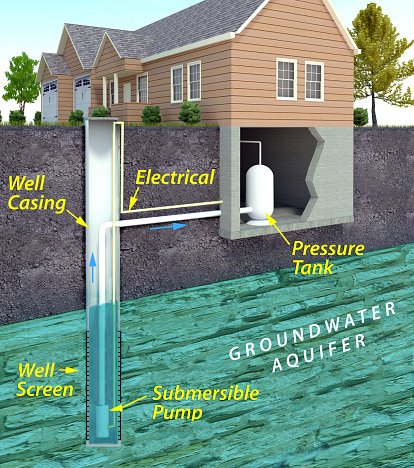
In the New River Valley, plenty of homes – particularly those in county locations – have private well systems, including my own. As someone who grew up in Virginia Beach, and then having lived in Blacksburg Town limits for almost 20 years, I’d never had a well, so after purchasing a home that’s on a private well I recently signed up for the Montgomery County Household Water Quality Program, organized and run by the Virginia Cooperative Extension,.
I’m glad I did.
We were asked to provide ~ 1200mL of water from our homes, with very clear and specific instructions on how to collect, when, etc. We turned those in, and today received our results. If you’re on a private well in the New River Valley, you need to sign up for this program. Wow! The data they provided was outstanding, and they even work with the Flint lab – think Flint, MI – to dig deep into the results. It was truly phenomenal. My thanks to Erin Ling of Virginia Tech for organizing, and the follow-up presentation. They provided us details on each participant’s well, as well as well water safety, that I thought helpful. The following 10 points comes direct from a pamphlet provided by the Virginia Household Water Quality Program.
- Make sure your well is properly constructed. Well casing should be 12″ above ground, with a sanitary, sealed well cap or secure concrete cover to prevent contamination from insects and surface water. Unsure about your well construction? Visit www.wellwater.bse.vt.edu/wellcheck for more information.
- The ground should slope away from your well to prevent surface water from pooling around the casing, which can cause contamination and damage your system.
- Ensure your well is at least 100 feet away from potential contamination sources, such as chemical storage, oil tanks, and septic tanks. If you have a septic tank, have it pumped regularly.
- Keep the area around your well clean and accessible. Make sure the area is free of debris, paint, motor oil, pesticides and fertilizers. Do not dump waste near your well or near sinkholes, as this may contaminate your water supply.
- Have your water tested once a year for total coliform bacteria, which will give an indication whether there is a likelihood of more dangerous bacteria present that could potentially cause illness. Every three years, test for pH, total dissolved solids (TDS), nitrate, and other contaminants of local concern.
- All water tests should be conducted by a certified lab. After you receive the results, compare them to the drinking water standards for public systems by the EPA, which serve as good guidelines for private systems.
- Inspect your well annually for any cracks, holes, or corrosion. Ensure your well cap is secure. Every 3 years, or if you suspect a problem, have your well inspected by a licensed well drilling contractor with a Water Well and Pump (WWP) classification. For a list of contractors who provide well inspections, visit wellwater.bse.vt.edu/wellcheck.
- Keep careful records of your well installation, maintenance, inspections, and all water tests.
- If a well on your property is no longer in use, have it properly abandoned by a licensed well contractor. Wells that are left unsealed or improperly abandoned can serve as a direct pathway for surface water to enter the groundwater supply, causing contamination. Remember: groundwater is a shared resource!
- If you have a spring instead of a well, make sure the spring box is sealed to prevent contamination. Springs are very susceptible to contamination, so be sure to test your spring every year for coliform bacteria. Continuous treatment for bacteria is often required to ensure spring water is safe to drink.
We’re fortunate to have really great water sources, and water quality, in the New River Valley, and I knew it was important to pay attention to the well. But I mistakingly assumed that all that fancy equipment in the basement just magically took care of everything for us, and it does to a point, but knowing more of the details about our water supply gives me even more peace of mind that the water we drink is safe for consumption.
Now if you’ll excuse me, I need to go work on softening my water.